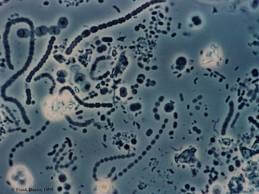It turns out that trees, which are often considered to be absorbers of warming, may betray us after they have been infected with bacteria that empty their interior and leave them hollow

We know that vegetation, especially forests and woodlands, are considered carbon dioxide absorbers and as such are also considered factors that moderate global warming.
However, despite being the most well-known and prominent of the greenhouse gases, carbon dioxide is not the only greenhouse gas. One of the most active greenhouse gases is methane. In addition to human activity (including agriculture and raising farm animals) there are methane emissions from swamps and "permafrost" surfaces.
Researchers from the Yale School of Forestry and Environmental Studies (Yale School of Forestry & Environmental Studies) publish in Geophysical Research Letters. h Results of a study that points to a "new" source of the greenhouse gas methane.
The researchers tested sixty trees in a grove near the university in northern Connecticut and found that they contain methane concentrations 80,000 times higher than the concentration in their surroundings. The concentration of methane in the environment of forests and groves is about 2 parts per million. In the trees tested, the concentration was higher than 150,000 parts per million. These are concentrations that, according to the researchers, constitute a "flammable concentration" and since in their opinion the conditions that create the methane emission process exist all over the world, they declare: "We have found a new source of greenhouse gas."
Estimating the emissions in the Bale grove is equivalent to burning 16 liters of gasoline per acre for a year. Since methane is a greenhouse gas 25 times more active than carbon monoxide, the contribution of the forest (the subject) to absorbing greenhouse gases and preventing global warming is minimal.
Since the conditions that cause methane production and emission processes are similar all over the world, the researchers estimate that: "methane emission by logging makes up 10% of global emissions", a factual process that is a surprise for the researchers.
The trees that produce methane are old trees (over eighty years old) that are infected with a fungal infection (pangus), although the external appearance of the trees is healthy. The common fungus creates spaces that grow inside the stem, and in these spaces favorable conditions are created for the development of microorganisms called methanogens - bacteria that turn carbon dioxide into methane. The species of trees in which the highest concentrations were found were: maple, oak, pine, linden and others, when the rate of gas production and emission was higher (3 times) in the summer, which suggests the possibility that as the temperature rises, the rate of methane emission by trees will increase.
To date, they have not linked rot as a result of bacterial activity to greenhouse gases and climate change. The study shows the importance of understanding biological-chemical processes for researchers trying to link greenhouse gas emissions to climate change.
Note
In light of the fact that the trees that "produce" and emit methane are old and hollow trees and among them are trees that are common in our environment such as oaks, elms and olives, it would be appropriate to check if there is a connection between the distribution of such trees and fires.

8 תגובות
As a preventive measure, it is advisable to cut down all those treacherous trees that threaten us ahead of time. And it is better sooner than later to kill the farm animals that are dangerous to the global temperature.
In general, domesticated animals and humans are unnecessary forms of life that break the balance by nature and therefore must be euthanized as soon as possible.
(You will be surprised, but there are people who think and write like this - posthumanists, fatalists)
And they also happen to be the richest and most influential in the world and help spread and finance their green environmental religion.
It's all well and good that they came up with this problem, but has anything been done to solve the problem of releasing methane gas from all the known sources (animals, plants, the bottom of frozen lakes)?
interesting. Is there a quantitative comparison between a cow and a tree compared to one cow/sheep?
Title change to - New discovery of methane source
Be open minded!
The methane is emitted from the digestive system of the cows and sheep through the mouth, so it is hiccups (graps) and not what you mentioned.
So methane doesn't just come from the farts of sheep and cows, but also from the farts of trees.
A very interesting article indeed.
...it's important to warn all the tree huggers about the funny trees ;~)
A small note,
Forests and groves do not absorb PAD when they are mature (because their biomass is in equilibrium). Only the planting of new ones destroys FDF.
Hello Asaf
These are methanogenic archaeons, those creatures that also emit methane in the digestive systems of animals and in the depths of swamps. They are not bacteria, but a group corresponding to them.
You are welcome to read about modern systematics (for 35 years) here.
http://drorbn.blogspot.com/2006/01/blog-post.html